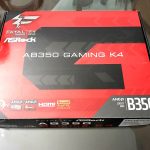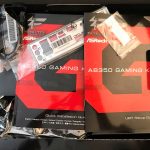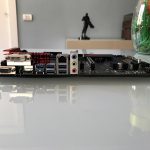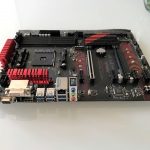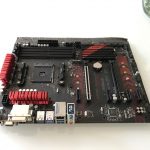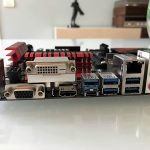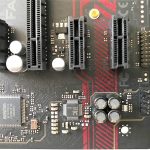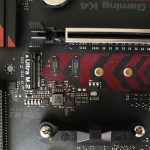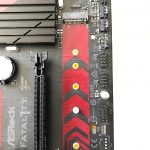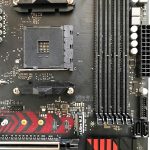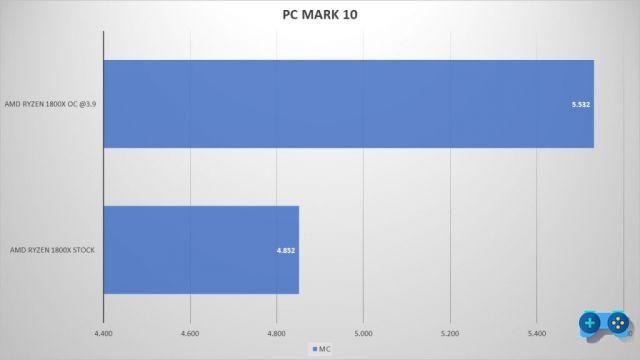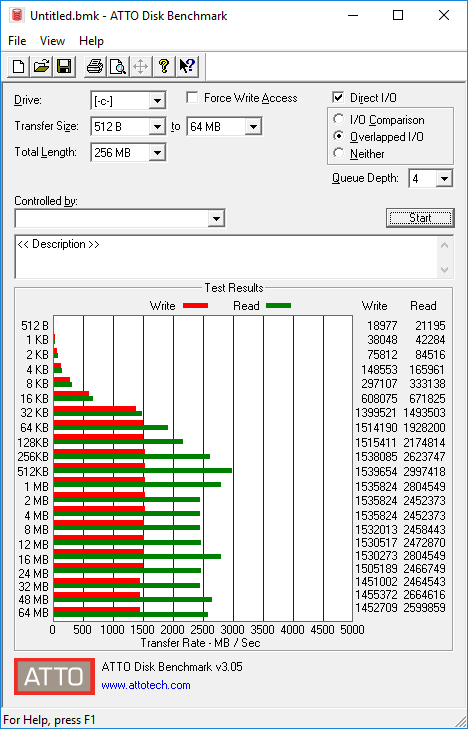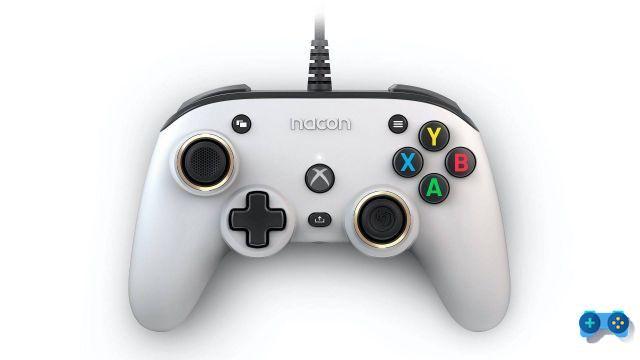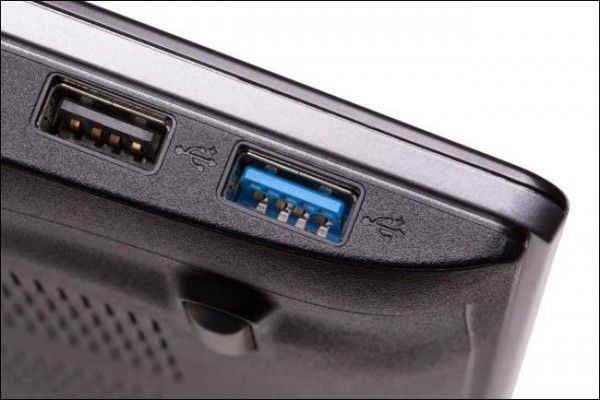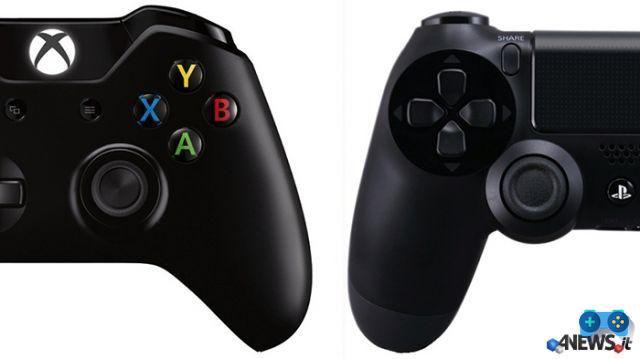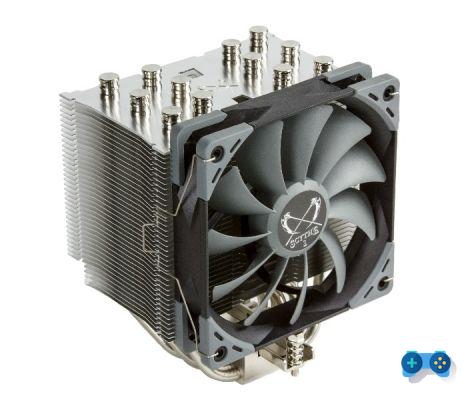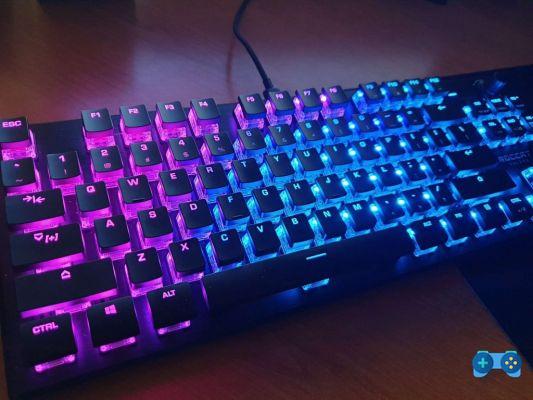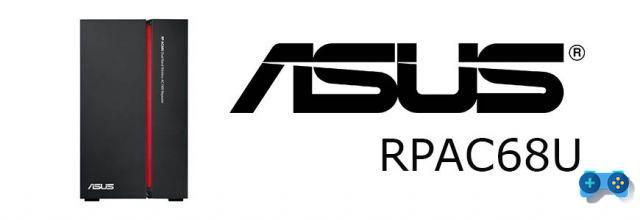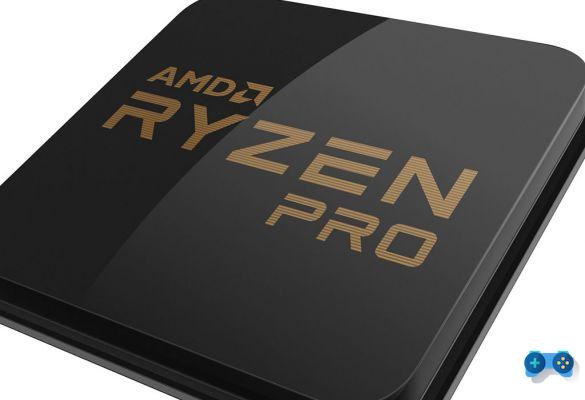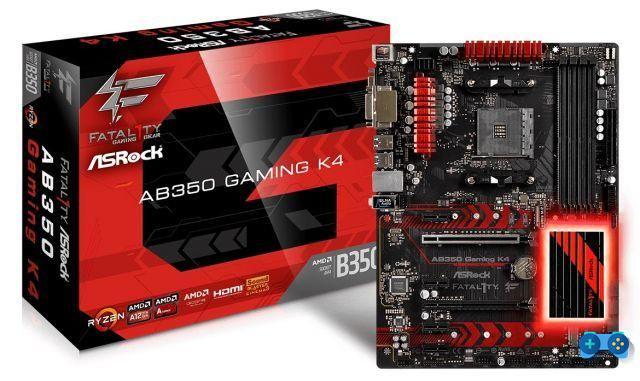
In test ASROCK Fatal1ty AB350 Gaming K4, one of the most interesting cards with AM4 socket based on the B350 chipset on the market, not only for the excellent value for money but also for some choices that place it a step above other cards in the same segment of market.
Ryzen's commercial success is now a fact: The new processor has revived AMD's somewhat tarnished image that can now finally compete on equal terms with Intel and its i7 and i9 processor family. However, Ryzen is an important step forward for the Sunnyvale company also because it determines the retirement of the AM3 socket, which has accompanied AMD processors for more than a decade. The new AM4 socket, as we explained in our review of Ryzen and the top of the range 1800x, is accompanied by some important innovations. First of all, AMD has definitely pushed a lot on the integration of Southbridge and Northbridge, essentially creating an architecture much more similar to that of a SoC (System on a Chip) in which the CPU manages all the operations related to SATA, USB, NVMe and PCiE and to assign computational operations dynamically between CPU and Socket (southbridge). The chipset, in the traditional sense, is still present but only serves to add more connectivity, such as more SATA ports, USB 3.1 and more PCIe lanes.
Being a SoC architecture, the differences between the different platforms are therefore rather limited. In any case, the AM4 range is divided into five products: X370 e B350 represent the solutions for the enthusiast and performance band, the most interesting from the point of view of a gaming configuration based on Ryzen 5 or 7. Between the two chipsets, the only difference is the presence, in the first, of a greater number of PCIe lanes to support NVIDIA's multi GPU architectures and greater auxiliary connectivity.
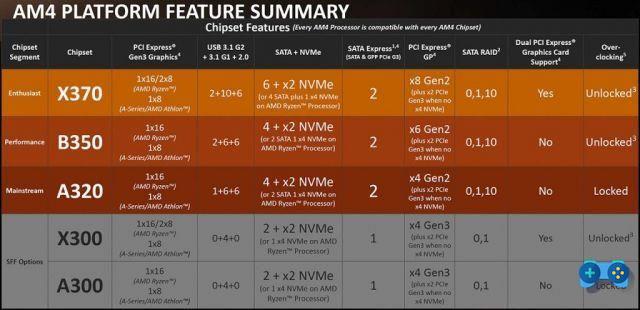
Both X370 and B350 instead manage overclocking, depending on the features implemented by the different motherboard manufacturers, making it possible to take advantage of the unlocked multiplier of the entire Ryzen 7 processor family.
Among the first manufacturers to support the new AMD platform with great enthusiasm there was certainly AsRock which has provided Ryzen processors with a whole family of motherboards, from those for the entry level market, up to the performing ones Taichi based on X370 chipset. The Taiwan company, Emancipated from the protective shadow of Asus for 7 years, it is today one of the largest motherboard manufacturers on the market and can count on a very wide range of products, capable yesterday as today of presenting highly innovative products, such as the Z87 Extreme11 / ac a few years ago, with 22 SATA ports, or the first cards with Ultra M.2 slots, or to come to the present day, AsRock was also the first house to introduce Plex switches so as to have more working PCIe X16 slots simultaneously.
The board under test, the AsRock Fatal1ty AB350 Gaming K4 it is part of the intermediate range of the manufacturer's offer as regards the AM4 socket and at the top as regards the B350 chipset, providing gamers to whom it is expressly dedicated, a product with really interesting features at a very affordable price. In particular, some of the features offered by ASRock are unique, which could determine its choice over other competing products.
ASROCK Fatal1ty AB350 Gaming K4 in detail
The Fatal1ty AB350 Gaming K4 is a card based on socket B350 that AMD places in the “Performance” range as you can see from the graph above.
The form factor is ATX with balanced dimensions (30.5cm x 22.4cm), while the PCB is dark in color with pleasant details and red finishes. In a particular color, which we could define Ferrari red, are also the heatsinks present on all the VRMs, which recall the typical family feeling of the AsRock Fatal1ty cards. The attention to aesthetic details, despite an overall economic street price of just 100 euros, makes the Fatal1ty AB350 Gaming K4 a card particularly suitable for "gaming" configurations, for a rig even with components in sight.
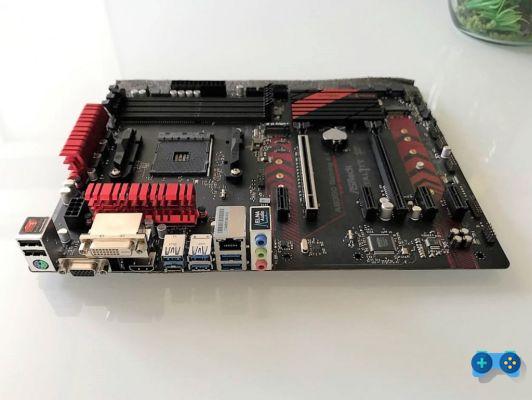
Always the PCB is of high quality, in high thickness glass fiber and with a high quantity of copper, which guarantees durability, resistance to twisting and humidity. The power supply compartment is of a good standard with an ISL95712 digital power controller (4 + 3 phases 300 / 450Khz), 50A valves and a power supply circuit "6" + 3 phases, "6" for the vcore and 3 for the SoC . In reality, as we will see later when we analyze in detail the circuitry, although equipped with 6 inductors, the operating diagram of this Fatal1ty AB350 Gaming K4 it is the classic one of 3-phase cards.
The card also has 3 connectors for the fans, each of which can operate in both DC and PWM mode and with the possibility of switching between the two modes within the BIOS.
The card is also equipped with red LED lighting, which can be controlled from the BIOS, or with the specific software supplied.
More connections for all
From the point of view of connectivity, the Fatal1ty AB350 Gaming K4 stands out from other cards in the same market and price segment, due to the presence of more connectivity options, in particular with the second slot M.2, the largest number of SATA3 ports and USB ports, not to mention the presence of a useful USB Type-C.
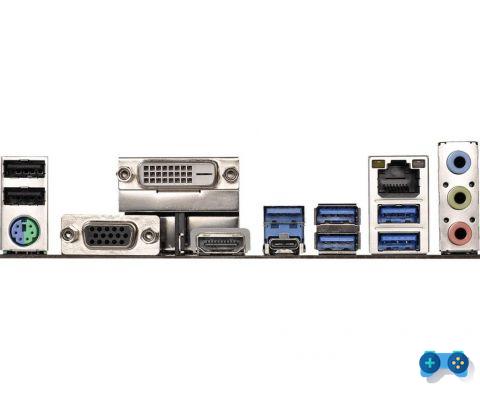 In particular, the board is equipped with:
In particular, the board is equipped with:
- 6 SATA3 ports of 6,0Gb / s of which four rotated 90 ° connected directly to the southbridge and two upward facing normals controlled by an ASMedia controller.
- 4 DDR4 DRAM slots (for memories up to 3200mhz)
- 5 3.0 USB ports
- 2 USB 2.0 ports
- 1 Type-C port
- 2 M.2 slots, of which 1 PCIe Gen3 x4 Ultra M.2 32Gb / s and the other x2 20Gb / s
- 4 PCI Express 2.0 x1
- 2 PCI Express 3.0 x16 slots, one of which with reinforced steel socket to resist the bending caused by heavier video cards.
- 4 PCI-E x1, one PCI-E 2.0
Additional connectivity options include:
- 1 x PS / 2 for keyboard / mouse
- 1 x D-Sub
- 1 x DVI-D
- 1 x HDMI
- 1 x RJ-45 LAN with LED
- HD Audio Jack: Line In / Front Speaker / Microphone
The audio sector is managed via a chip Realtek ALC892 and capacitors ELNA audio. Like many other cards of this type, the audio compartment is physically separated from the rest of the card to avoid interference with other components. The chipset is capable of supporting 7.1 multi-channel audio but to do this you need to connect the side and front inputs. A choice that certainly does not favor comfort and cable management.
The box includes an I / O shield, two SATA6Gb / s cables, 2 screws for M.2 disks, a dvd with drivers and software, a postcard and manuals. The included software includes: F-Stream, ASRock RGB LED, SoundBlaster Cinema 4, the APP Shop and the Restart to UEFI application.
A card different from the others: the unique features of the Fatal1ty AB350 Gaming K4
As we mentioned in the introductory part of this review, the Fatal1ty AB350 Gaming K4 has among its characteristics some strengths that will please gamers and enthusiasts and some small flaws that all in all we feel we can forgive.
First AsRock declares a 6 + 3 phase configuration. This particular configuration is generally only present on high-end cards, usually X370, and definitely much more expensive than the one being tested. We were therefore very surprised to read these features in this sheet and we decided to investigate by removing the two heatsinks. 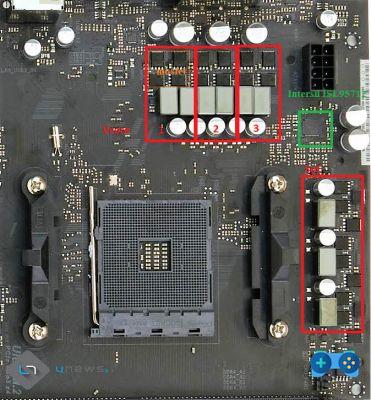
Even looking closely at the card, and in particular the VRM of the Vcore (the VRM of the SoC does not present any anomaly with its 3 phases), 6 inductors can be observed (the small gray cubes that we have circled in red) with 4 mosfets (in orange), two at the top and two at the bottom. All this would actually suggest a 6-phase configuration. Actually AsRock has engineered this board in such a way that the 4 mosfets and the two inductors work in parallel. In fact, the driver cannot switch between the inductors individually but these work in synchrony two at a time, thus reaching the three phases common to all the other cards in this price range. The power controller is an Intersil ISL95712 PWM which is assisted in its task by an ISL6625 driver for the CPU and 2 drivers for the SOC.
Despite this, the excellent workmanship of the inductors allows to obtain comparable results in terms of overclocking, compared to those achievable with more expensive cards with X370 chip and this is already a big win, if you think that the card is available at a price of about 100 euros and has more usb, more PCIe, more NVMe and more SATA than more expensive competing solutions.
In our case in particular, with a Ryzen 1800x processor we managed to get a maximum of 3900mhz stable with a voltage of just 1.29v. The 3900 are unfortunately the physical limit of our processor which at higher frequencies caused the machine to crash or the impossibility of posting.
Furthermore, the aluminum heatsinks mounted on all VRMs, although not particularly generous, perform their duty effectively, keeping at bay the temperatures that are among the lowest recorded with other B350 cards. The Gigabyte AB350 Gaming G1, for example, reached temperatures even 20/30 degrees higher than those of ASRock while costing more, while the delta with MSI is 6-7 degrees to the advantage of the card under test.
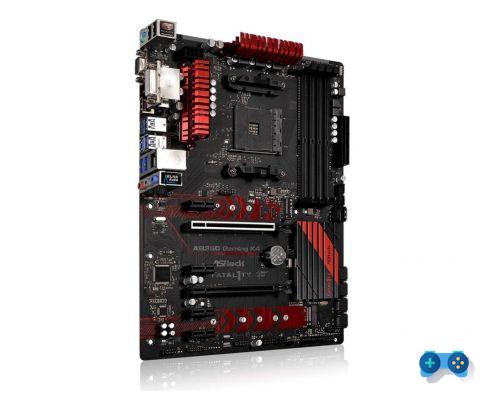 Among the main differences between the B350 and X370 “chipset”, there is also the inability of the former to use NVidia's SLI features. Asrock has brilliantly overcome this impossibility by providing two x16 PCI-E 3.0 slots, the first connected directly to the CPU, while the second is electrically a x4 PCI-E 3.0 which shares the bandwidth with the second M.2 slot. In this way, if the NVMe slot is not used, it is possible to add a second Nvidia graphics card using the second PCIe present. This is particularly useful in machines that need to have virtual machines with dedicated graphics cards.
Among the main differences between the B350 and X370 “chipset”, there is also the inability of the former to use NVidia's SLI features. Asrock has brilliantly overcome this impossibility by providing two x16 PCI-E 3.0 slots, the first connected directly to the CPU, while the second is electrically a x4 PCI-E 3.0 which shares the bandwidth with the second M.2 slot. In this way, if the NVMe slot is not used, it is possible to add a second Nvidia graphics card using the second PCIe present. This is particularly useful in machines that need to have virtual machines with dedicated graphics cards.
Another interesting feature is the support for I / OMMU, a feature that is actually more useful in the server environment, but whose presence certainly can only please us.
BIOS
AB350 Gaming K4, shares a very similar Bios with its bigger sisters based on the X370 chipset. The BIOS does not offer a simplified version and this is good as far as we are concerned, finding simplified settings is a real waste of time: if you are in the BIOS you already know what you are doing and you want to have maximum control over everything you can control. no?. From the HWmonitor Menu it is possible to access the fan control, which unlike the Asus BIOS, for example, is carried out through the drop-down menus in which it is necessary to set the percentage of fan speed and temperature. I found this setting much more comfortable than the graphic one, because it allowed me to set the operation of the fans with greater precision.
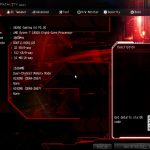
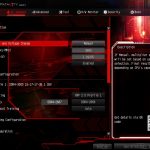


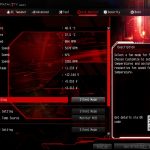
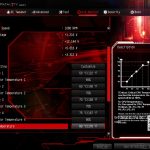



The "Advanced" menu contains the advanced options of AMD, while in the "OCtweaker" menu it is possible to set all the overclocking options which include: multiplier, voltage, SMT activation or deactivation, XMP for the ram and a specific control for the timings.
About the voltage we found that while with the AGESA 1.0.0.6 BIOS we had some problems setting a voltage higher than 1.375, with the card simply not accepting higher voltages, updating to the latest version 1.0.0.6a the problem disappeared .
DDR4
We used two types of ram le in our tests Corsair Vengeance LPX (CMK16GX4M2B3000C15) equipped with Hynix and le modules Corsair Dominator 3000 MHz CL15 (CMD16GX4m2b3000C15); both memories have single rank modules, which should guarantee higher clock speeds. In both cases, however, the motherboard failed to recognize speeds above 2667 MHz. The update to Agesa 1.0.0.6a we expected would also bring greater compatibility with our modules, but this did not happen. The compatibility of the memories, of course, is not a problem only of this card, but it concerns all the AM4 motherboards tested so far and is probably attributable more to AMD than to the various manufacturers who have had very little time to work on compatibility. To date, if we exclude the FlareX by G.Skill, the only ones to be certified for Ryzen processors, the memories on the market are not yet able to recognize "AMP", the AMD equivalent of XMP. Before buying your modules, therefore, our advice is to take a tour on the page we have reported to you and keep an eye on the motherboard manufacturer page and for any updates to the AGESA BIOS.
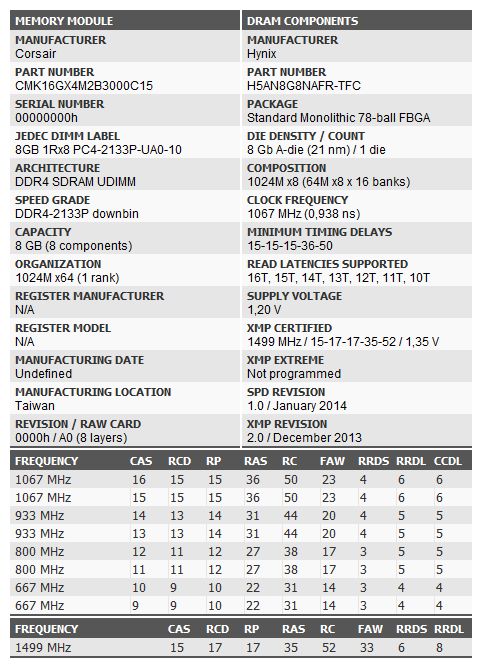
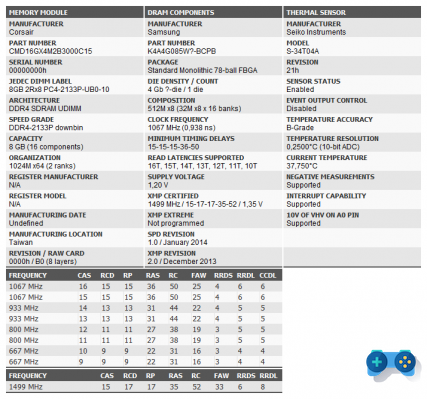
In any case, 2667Mhz is a really good speed, which also allowed us to keep the timings lower than those declared by the manufacturer Corsair. With Ryzen, on the contrary, this speed seems to be the ideal sweet spot between speed and timings, appreciable not only in synthetic benchmarks but also in game as we will see in the graphs below.
Test and test machine
NB. For this test we used a retail motherboard supplied by AsRock identical to the one you can buy in any physical or online store. This clarification is a must given that some manufacturers have the habit of using as test samples for the editors, at best, cards equipped with "revised and corrected" BIOS, when not even equipped with improved components and functionality.
The review you will read therefore concerns a real product and faithfully reflects what you will face if you buy this product.
For our test we used our new AMD rig based on the Ryzen 1800x processor.
Compared to the previous tests carried out to test the processor, we have added to the Thermaltake Core P3 case (an open case without fans) an extraction fan near the heatsinks of the VCore to have performance comparable to what you could get in a closed case. traditional. In any case, our AsRock proved to be perfectly at ease with this additional fan as well, with temperatures lower than the average of other cards.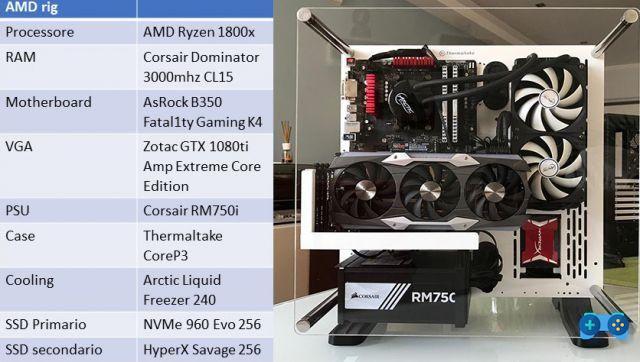
Performance Benchmarks
Since it is not possible to detect any differences whatsoever by setting the motherboard to stock temperatures we decided to test the motherboard, at the maximum oc possible with our processor, 3.9GHZ focusing in particular on the differences recorded with different memory clocks.
As we have already clarified in our review dedicated to Ryzen, given the interconnection between memory speed and system bus (infinity fabric) the speed of the memories is fundamental to obtain better results in benchmarks and games. Especially for The Witcher 3 we have observed variations of even 10 FPS in the passage from the frequency 2133 MHz to 2667 MHz. More than on the maximum results, however, which in real life leave the time they find, the real improvement we have observed in the average frame rate that has become much more stable, unequivocally testifying how the Ryzen platform prefers very fast memories.
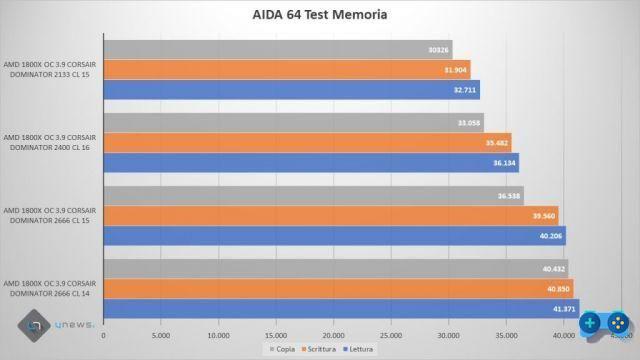
Among the titles used for the tests, GTA V it is perhaps the one that puts the processor under stress the most. In all situations, Ryzen 7 1800X is flawless, demonstrating great stability even in average frame rates that significantly improve by increasing the speed of the RAM
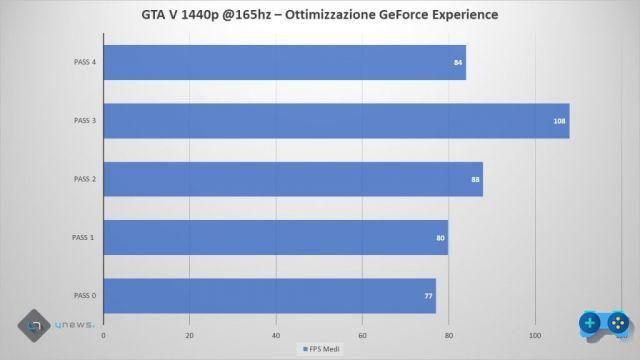
The Witcher 3 it is particularly interesting for the purposes that interest us here, because it is the confirmation of what we have also verified in the test with AIDA64. The performance of the 1800X and, in general, of all the products of the Ryzen 7 family are influenced in a decisive way by the speed of the memories. While on other products such as Intel's 7700K this difference is much less marked (probably due to the high frequency of this processor), on Ryzen using memory with high frequency and low timings is a must. Too bad that, to date, not all ram are able to exceed the 2666Mhz threshold.
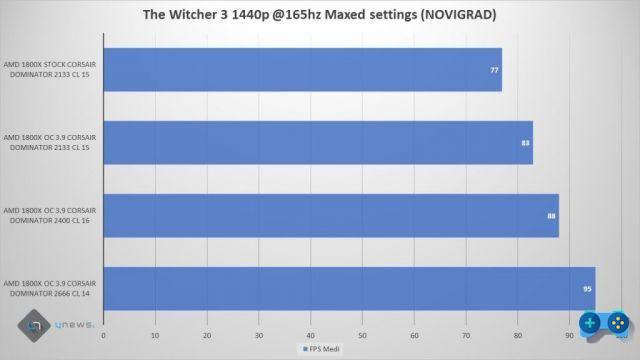
I / O Benchmark
In this series of tests carried out with Atto Disk Benchmark and Crystal Disk Mark we tested the performance of the two disks on our machine, the 960GB Samsung 256 EVO NVMe and the 256GB HyperX Savage SSD:
ACT DISK BENCHMARK Samsung 960 Evo NVMe
ATTO DISK BENCHMARK HyperX Savage 256Gb
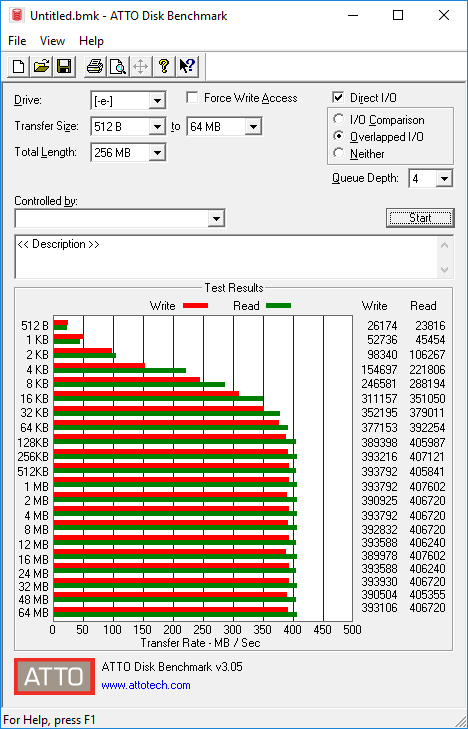
CrystalDiskMark Samsung 960 Evo NVMe
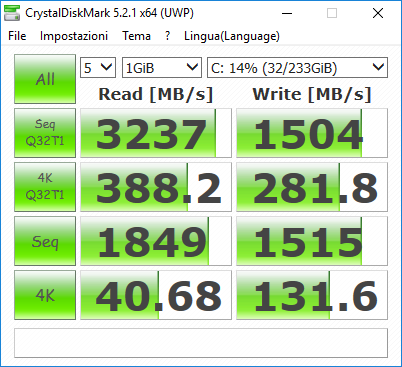
CrystalDiskMark HyperX Savage 256Gb
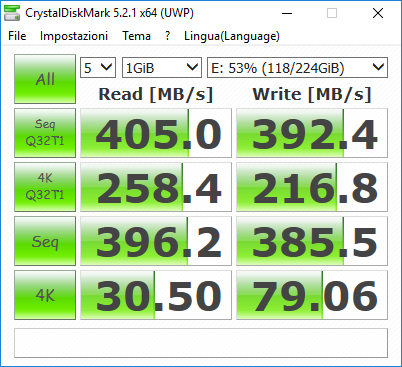
Overclock temperatures
With a multiplier of x39 for the processor and a voltage set at 1.35v, the processor consumptions are in full load around 129W of total package compared to 95W in the stock version, performance increases significantly with a percentage increase that reaches 30% in more frequency sensitive programs and in games. The increase in performance corresponds to a completely acceptable increase in temperatures, never exceeding the 57th of the processor in the AIDA64 stress test (with Stress FPU activated) with 40 ° for the motherboard and coming to touch i 61st in PRIME95 and SuperPI for the processor and 44 for the motherboard. Lowering the voltage to 1.29375v, the lowest value that allowed us to keep the machine stable, we observed a decrease in the temperature of the 39 ° motherboard and that of processor up to 51 ° with FPU stress activated, e 49 stress-free FPU in full load.
These data are frankly more than positive, considering that in our test with the Gigabyte AB350 Gaming 3 the temperatures had touched 70 ° in the PRIME test.
Conclusions and judgment

La ASROCK Fatal1ty AB350 Gaming K4 it is a card that surprised us from many points of view. First of all, the number of connections is above the average of other cards of this type with dual PCIe X16 one of which is reinforced in steel, dual NVMe controllers e USB type-C ; the overclocking capabilities, despite as we have seen some data plate a little too optimistic, are certainly very good thanks to the excellent workmanship of the circuitry, even overabundant with double inductors in parallel, which allowed us to overclock our processor with absolute peace of mind up to the physical limits of the CPU. We were also very surprised by the temperatures, which turned out to be much lower than the average of products in the same market segment. If we want to find a flaw, we can include RAM support that is not exactly large (but expanding with the last AGESA BIOS 1.0.0.6a), which in any case allowed us to bring our DDR4 Corsair Dominator to 2667Mhz with CL13 timings. Attractive also from an aesthetic point of view, the ASROCK Fatal1ty AB350 Gaming K4 is offered at a very competitive price (the street price is around 90 euros) which allows us to promote it and recommend it to everyone.
